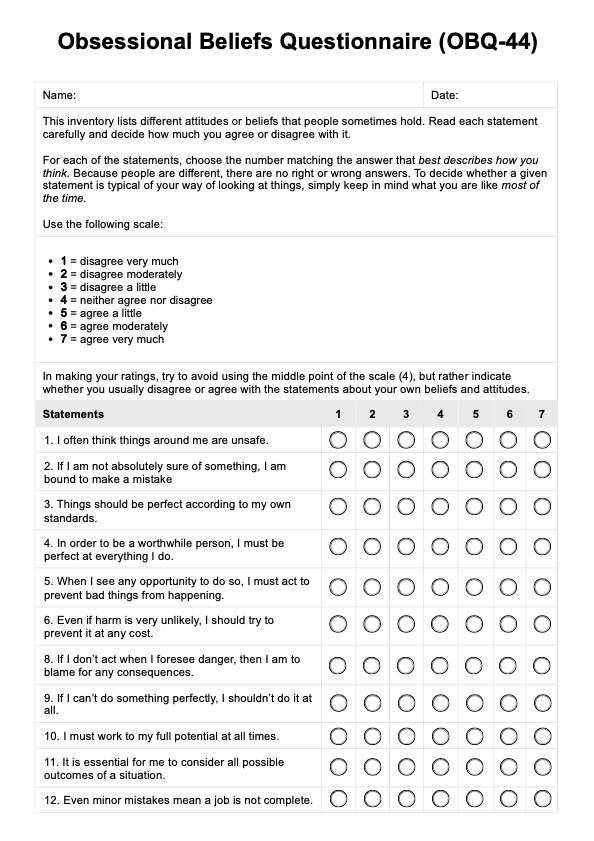Obsessive beliefs are dysfunctional thought patterns, such as exaggerated responsibility or perfectionism, that contribute to obsessive-compulsive symptoms.

OBQ-44
Download a free Obsessive Beliefs Questionnaire-44 (OBQ-44) here to assess dysfunctional beliefs linked to OCD.
Use Template
OBQ-44 Template
Commonly asked questions
The Obsessive Belief Questionnaire (OBQ) is a psychological tool used to assess dysfunctional beliefs associated with obsessive-compulsive disorder.
The belief domains of obsessive-compulsive disorder (OCD) symptoms include responsibility and threat overestimation, perfectionism and intolerance of uncertainty, and the importance and control of intrusive thoughts.
EHR and practice management software
Get started for free
*No credit card required
Free
$0/usd
Unlimited clients
Telehealth
1GB of storage
Client portal text
Automated billing and online payments











